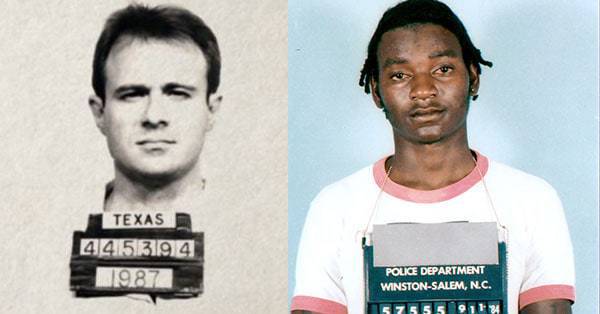It is a sad fact that justice systems all around the world allow innocent people to receive punishment. The American justice system is no different as a study jointly conducted by the Northwestern University School of Law, and the University of Michigan Law School proved in 2012. It showed that in a 23-year period, approximately 2,000 people were falsely convicted of serious crimes in the U.S. and later exonerated.
Sadly, the data is quite limited, and the study only outlined a fraction of the real figure. As a result, I am looking at cases where people were wrongly convicted in the 1980s. The reasons for the convictions include wrongful identification, incompetent defense attorneys, and low-quality forensics. In this article, I look at 7 miscarriages of justices that cost the innocent party dearly.

1 – Dewey Bozella (Convicted in 1983)
Bozella was born in New York in 1959 and saying he had a rough upbringing is an understatement. When he was just 9 years old, he witnessed his father beat his pregnant mother to such a degree that she later died from her wounds. Bozella’s father ran away and did not return. Three of his brothers suffered terrible fates too; one died from AIDS, and two others were murdered. Despite facing all of this tragedy plus the fact he spent three years in prison for attempted robbery, Bozella ultimately earned a Bachelor’s Degree. He later earned a Master’s from the New York Theological Seminary.
If he believed that he was finally on the right path, he was sadly mistaken. In 1977, 92-year old Emma Crapser was brutally murdered at her home in Poughkeepsie. She walked in on a burglar after returning home from a night of church bingo, and the intruder tied her up and suffocated her before fleeing the scene. Police claimed that Bozella was the culprit and in 1983, he was convicted of murder and sentenced to 20 years in prison.
Bozella proclaimed his innocence throughout the hearing and during his lengthy spell in Sing Sing. He was convicted again in 1990 even though the evidence against him was sketchy at best. Bozella was denied parole on four occasions, and during his time in prison, he became the light-heavyweight boxing champion of Sing Sing. He never gave up hope, and when he contacted the Innocence Project, it agreed to take on the case. It found that there was no more DNA evidence to be tested, so it referred the case to a law firm named WilmerHale.
Its attorneys discovered that county police officers and attorneys withheld four important pieces of evidence from Bozella’s defense lawyers. It included a neighbor’s testimony which spoke about hearing rustling in an alleyway near a window where the police found a fingerprint. It belonged to someone named Donald Wise who had been convicted of killing an elderly person in a similar manner. Even though this information would have exonerated Bozella at the time since it shifted the blame to another individual, the county claimed it had legitimate reasons for not turning over the evidence. A judge later found out that the prosecution relied heavily on testimony from two men who altered their stories to get improved sentences for other crimes.
Bozella was finally released in 2009 after serving 26 years in prison. He sued Dutchess County for $25 million, and the case was settled for $7.5 million. Bozella spoke of his dream to have a professional fight and thanks to the help of boxing legend Bernard Hopkins, Bozella made his debut on the undercard of Hopkins’ fight against Chad Dawson on October 15, 2011. The 52-year old beat Larry Hopkins on points over four rounds.

